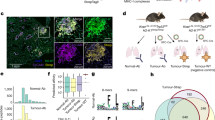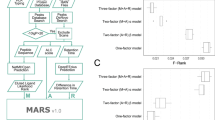Abstract
MANY mouse and human tumours express major histocompatibility complex (MHC) class I-associated antigens that constitute targets for syngeneic cy to toxic T lymphocytes (CTL). Genes encoding such antigens were isolated from a mouse mastocytoma and from human melanomas by genetic methods1,2. Isolation and charac-terization of MHC class I-associated peptides has enabled specific anchor residues to be identified that are typical of peptides that bind to distinct class I molecules3. Moreover, CTL specific to particular MHC-peptide combinations have been used to identify naturally occurring antigenic peptides in cell extracts and enabled them to be sequenced directly4–6. Most known MHC ligands are of viral origin or are self peptides derived from normal proteins7. Here we use total acid extraction and repeated fractionation to isolate and sequence Lewis lung carcinoma (3LL)-specific pep-tide(s), which shows sequence homology to the connexin 37 protein. Synthetic octamers based on these sequences bind to 'empty' H-2Kb molecules on RMA-S cells, sensitize RMA-S cells to lysis by specific anti-3LL CTL, and induce anti-tumour CTL. The tumour-associated peptide originates from mutated connexin 37 expressed in 3LL.s
This is a preview of subscription content, access via your institution
Access options
Subscribe to this journal
Receive 51 print issues and online access
$199.00 per year
only $3.90 per issue
Buy this article
- Purchase on SpringerLink
- Instant access to full article PDF
Prices may be subject to local taxes which are calculated during checkout
Similar content being viewed by others
References
Van Den Eynde, B., Lethe, B., Van Pel, A., De Plaen, E. & Boon, T. J. exp. Med. 173, 1373–1384 (1991).
Van Der Bruggen, P. et al. Science 254, 1643–1647 (1991).
Falk, K., Rotzschke, O., Stevanovic, S., Jung, G. & Rammensee, H. G. Nature 351, 290–296 (1991).
Rotzschke, O. et al. Nature 348, 252–254 (1990).
Van Bleek, G. M. & Nathenson, S. G. Nature 348, 213–216 (1990).
Udaka, K., Tsomides, T. J. & Eisen, N. H. Cell 69, 989–998 (1992).
Rammensee, H. G., Falk, K. & Rotzchke, O. A. Rev. Immun. 11, 213–244 (1993).
Plaksin, D., Gelber, C., Vadai, E., Feldman, M. & Eisenbach, L. Proc. natn. Acad. Sci. U.S.A. 85, 4463–4470 (1988).
Mandelboim, O., Feldman, M. & Eisenbach, L. J. Immun. 148, 3666–3673 (1992).
Plaksin, D., Gelber, C. & Eisenbach, L. Int. J. Cancer 52, 771–777 (1992).
Franks, L. M. et al. Br. J. Cancer 49, 423–429 (1984).
Fremont, D. H., Matsumura, M., Stura, E. A., Peterson, P. A. & Wilson, I. A. Science 257, 919–927 (1992).
Zhang, W., Young, A. C. M., Imarai, M. Nathenson, S. G. & Sacchettini, J. C. Proc. natn. Acad. Sci. U.S.A. 89, 8403–8407 (1992).
Levitt, M. J. molec. Biol. 170, 723–764 (1983).
Huang, M. M., Arnheim, N. & Goodman, M. F. Nucleic Acids Res. 20, 4567–4573 (1991).
Willecke, K. et al. J. Cell Biol. 114, 1049–1057 (1991).
Willecke, K., Hennemann, H., Dahl, E., Jungblute, S. & Heynkes, R. Eur. J. Cell Biol. 56, 1–7 (1991).
Lee, S. W., Tomasetto, C. & Sager, R. Proc. natn. Acad. Sci. U.S.A. 88, 2852–2859 (1991).
Lee, S. W., Tomasetto, C., Paul, D., Keyomarsi, K. & Sager, R. J. Cell Biol. 118, 1213–1221 (1992).
Zhu, D., Kidder, G. M., Caveney, S. & Naus, C. C. Proc. natn. Acad. Sci. U.S.A. 89, 10218–10221 (1992).
Eghabali, B., Kessler, J. A., Reid, L. M., Rou, C. & Spray, D. C. Proc. natn. Acad. Sci. U.S.A. 88, 10701–10705 (1991).
Townsend, A. et al. Nature 340, 443–448 (1989).
Falk, K. et al. J. exp. Med. 174, 425–434 (1991).
Author information
Authors and Affiliations
Rights and permissions
About this article
Cite this article
Mandelboim, O., Berke, G., Fridkin, M. et al. CTL induction by a tumour-associated antigen octapeptide derived from a murine lung carcinoma. Nature 369, 67–71 (1994). https://doi.org/10.1038/369067a0
Received:
Accepted:
Issue date:
DOI: https://doi.org/10.1038/369067a0
This article is cited by
-
A randomised controlled trial of long NY-ESO-1 peptide-pulsed autologous dendritic cells with or without alpha-galactosylceramide in high-risk melanoma
Cancer Immunology, Immunotherapy (2023)
-
Hematopoietic progenitor kinase 1 is a critical component of prostaglandin E2-mediated suppression of the anti-tumor immune response
Cancer Immunology, Immunotherapy (2010)
-
In vivo anti-melanoma efficacy of allo-restricted CTLs specific for melanoma expanded by artificial antigen-presenting cells
Cancer Immunology, Immunotherapy (2009)
-
Identification of IMPDH2 as a tumor-associated antigen in colorectal cancer using immunoproteomics analysis
International Journal of Colorectal Disease (2009)
-
Developing effective tumor vaccines: basis, challenges and perspectives
Frontiers of Medicine in China (2007)



